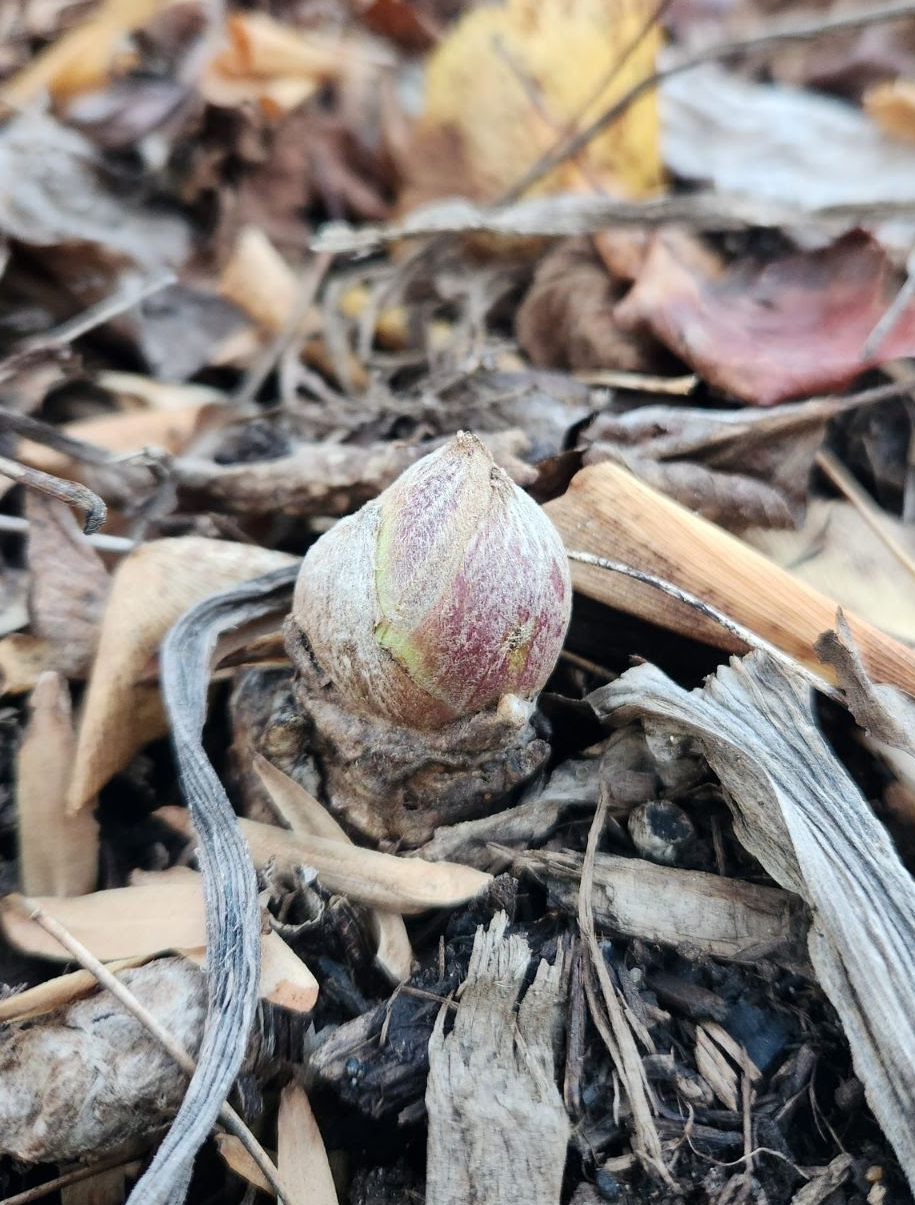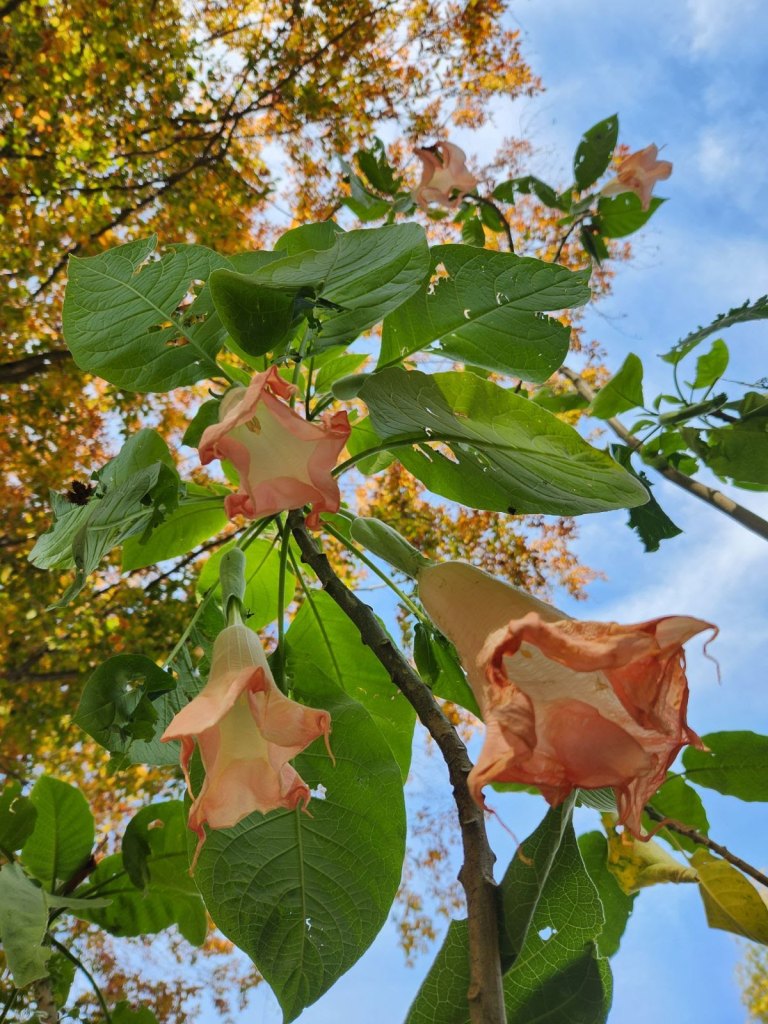What a difference a month makes!
The Hellebores (Hellebore spp) are still going strong, but many of the native spring ephemerals have already completed their brief bloom phases. Below (clockwise from top left), a bumblebee works the Hellebores; native Bluebells (Mertensia virginica) blooming; native Golden Ragwort (Packera aurea) has a longer bloom-time than many other early spring bloomers and is just getting started; and our dainty but robust Twinleaf (Jeffersonia diphylla) blooms in Terrace D.

During its decades of history, The Green Farmacy Garden has been connected to a variety of plant research projects. One ongoing study at University of Maryland College Park sources fresh Stinging Nettles (Urtica dioica) from the Garden to explore their nutritional content and compare to those of the same species grown in different conditions.
Another study at Emory University is studying the threatened species Schisandra glabra, which though native to Southeastern states has been growing happily in The Green Farmacy Garden for over a decade. Each season we track its progress alongside its famous adaptogenic cousin, Schisandra chinensis. We always see the same pattern pictured below: Schisandra chinensis leafs out and blooms far ahead of Schisandra glabra, and our S. glabra leafs out weeks later than the native ones in Alabama, but tends to open its flowers around the same time.
Below top, native Schisandra glabra is still dormant, while Below bottom Schisandra chinensis has already leafed out and is swelling flower buds.


Early spring offerings have attracted a number of young people to the Garden, which delights both us and them! We’re working to craft even more events catering to young people’s needs this season, including our Community Earth Day Celebration and a Children’s Day Extravaganza in June!
These young visitors joined us to learn about Willows at our Willow Walk & Work, supported by grant funding from Chesapeake Bay Trust and Clean Water Howard. Their attraction to the ponds underscored the value of water stewardship and connection. Water is life!


We had a strong turnout for the Willow Walk & Work. Participants learned about many ecosystem roles, medicinal applications, propagation boosts, and other functions of Willow species and then helped us install a couple hundred Live Willow Stakes along the eroded banks of one of our streams. Right now they just look like sticks in the ground (OK, they basically ARE just sticks in the ground), but hopefully many of them will do their willow magic and take root, eventually anchoring both themselves and the soil in place, to prevent further erosion.

We’re full of Spring energy and, buoyed by Grant support and support from CEI’s network, offering a bunch of events this month, which you can find on our Public Events page!
All non-logo images the creative works of Veri Tas except Bluebells, Twinleaf, and Spring Wild Edibles shots by Annie-Sophie Simard, garden group by Michael Hanes, eco-print by Julie Biedrzycki, and Tool Sharpening/ Repair Café pix by Simon Sauvageau


























































